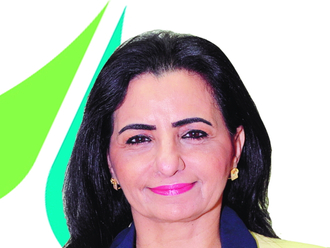-1554213800476_16a45055547_medium.jpg)
No one is immune to anxiety and depression. We all suffer from it to some degree throughout our lives and that’s okay. But when anxiety begins impacting our daily existence and ability to lead a fulfilling life that’s when it becomes an issue.
Mental health is easy to take for granted. We all know the importance of preventative health care. You probably get a physical exam and some blood work every year or two to make sure your body is functioning properly. But when was the last time you had mental health check-up or took the time for yourself to assess what’s going inside your head?
Unfortunately, most of us don’t take the same approach. Mental health disorders are attributed to a significant number of lost lives. We see so many people battling depression and anxiety, regardless of age, sex, race or social status, yet mental health is not an integral part of the medical system nor our daily life.
The treatment of mental illness has long been held back by the sense that disorders of emotions, thinking and behaviour somehow lack legitimacy and instead reflect individual weakness or poor life choices.
Most insurance plans view mental illness as exceptions to standard care, not part of it. And, despite an overall cultural shift towards compassion, our society still tends to view the mentally ill as morally broken rather than as unwell.
The shame and stigma surrounding mental health issues are the biggest obstacles when it comes to getting help. We tend not to talk about it or feel embarrassed to admit we are suffering from it.
Being an expat, we often lack the support networks we have back home. I’d like to introduce the hashtag of #IAmToo, for people to join a movement to break down the stigma of mental illness and share when you need support. People who are highly distressed need hope, support and interventions such as training in mind-calming activities like yoga and mindfulness meditation.
Here a basic yoga practice that includes meditation, breathing exercise and asana (physical poses) to ease symptoms of both anxiety and depression and improve the quality of your life.
Sama Vrtti Pranayam (the Breath of Equal Duration)
Sama Vritti means same or equal fluctuations in Sanskrit. In practice, it is a steady inhalation and exhalation of equal length. When you find yourself overwhelmed, anxious or disconnected from your body and mind, this breath teaches you steadiness and supports a gentle shift into parasympathetic nervous system.
-1554213800476_16a45055547_original-ratio.jpg)
It promotes balance and evenness in the natural flow of consciousness. Breathe in slowly for 1-2-3-4 steady counts. Take a moment at the top of your inhalation. Then also count to four as you exhale. Continue this for several rounds.
Asana Practice: Poses to boost your mood and calm your mind
I recommend starting your practice with dynamic stimulating poses to weed out negative thoughts, such as sun salutation, cat-cow, plank, downward-facing dog, tree pose, eagle pose, warrior poses, wide-legged standing forward bend and bridge.

Once you feel calmer and balanced, restorative poses like child’s pose, standing forward bend, seated forward bend, reclining bound angle or legs-up-the-wall can offer much-needed relaxation.
Wide-legged Standing Forward Fold
This asana helps relieve tension in your back, shoulders, and neck and improves the functioning of your nervous system.
Fish Pose (Matsyasana)
The bending of head and back while performing this pose assists in the release of negative feelings and pressure from the chest. It also increases the flow of thyroid hormones in the blood, which makes us feel lively and energised.
The pose strengthens the pineal gland, which enhances the melatonin hormone. This is responsible for balancing the biological rhythm, thus helping us to have a sound and restful sleep at night.
Bridge (Setu Bandha Sarvangasana)
-1554213810749_16a45055559_original-ratio.jpg)
Bridge pose stimulates the thyroid glands, abdominal muscles and helps calm the nervous system. It also helps relieve tiredness, high blood pressure and is therapeutic for hypertension.
Legs Up The Wall (Viparita Karani)
-1554213826402_16a45055562_original-ratio.jpg)
This asana not only relieves anxiety but also regulates blood circulation, manages blood pressure, restores the tiredness in the feet and legs, and also is great for insomnia and sleep-related disorders, while effectively managing mood swings, anxiety and depression.
Supine Bound Angle (Supta Baddha konasana)
-1554213832748_16a4505558a_original-ratio.jpg)
The pose puts the body completely at ease. It invokes feelings of inner calm and serenity and provides an ideal break from anxiety and nervousness.
Mindfulness Meditation
When you meditate, you will see your true nature. You’ll discover who you truly are. It is the practice of focusing the mind on the present moment. By bringing our complete attention to the present moment, we can detach ourselves from our feelings surrounding low mood or concern.
Instead, we can peacefully view our feelings “from above” without any judgement and realise they are just that, feelings only, “they come and then they go again”.
— Nerry Toledo is a Dubai-based yoga instructor. She conducts regular give-what-you-can community classes with the goal of making yoga more accessible for everyone. For schedules and locations, go to nerryfit.com.



-1554213807535_16a45055598_large.jpg)
-1554213829489_16a45055589_large.jpg)
-1554213822484_16a4505555b_large.jpg)
-1554213818993_16a45055534_large.jpg)
-1554213814165_16a4505559c_large.jpg)
-1554213810749_16a45055559_large.jpg)









